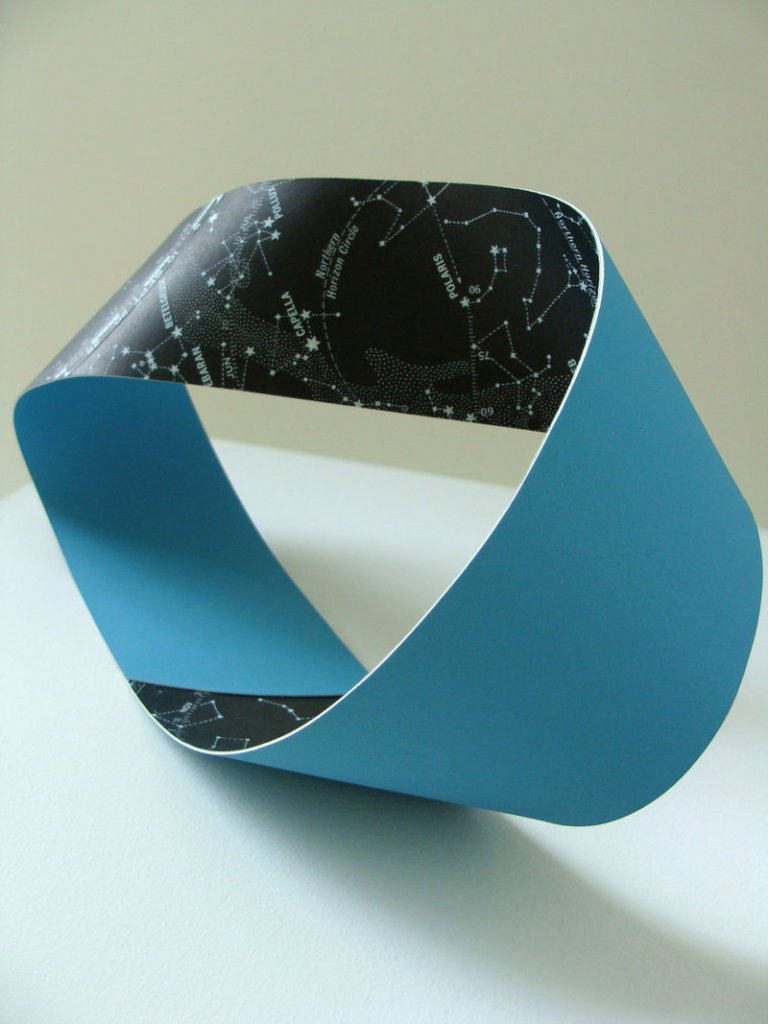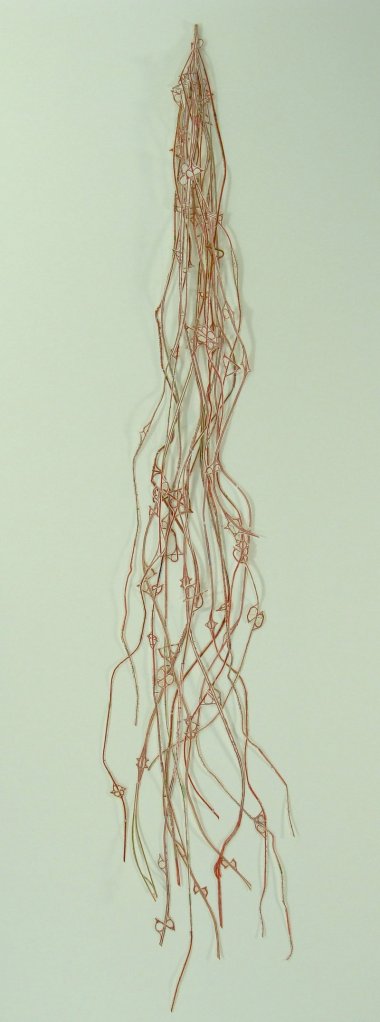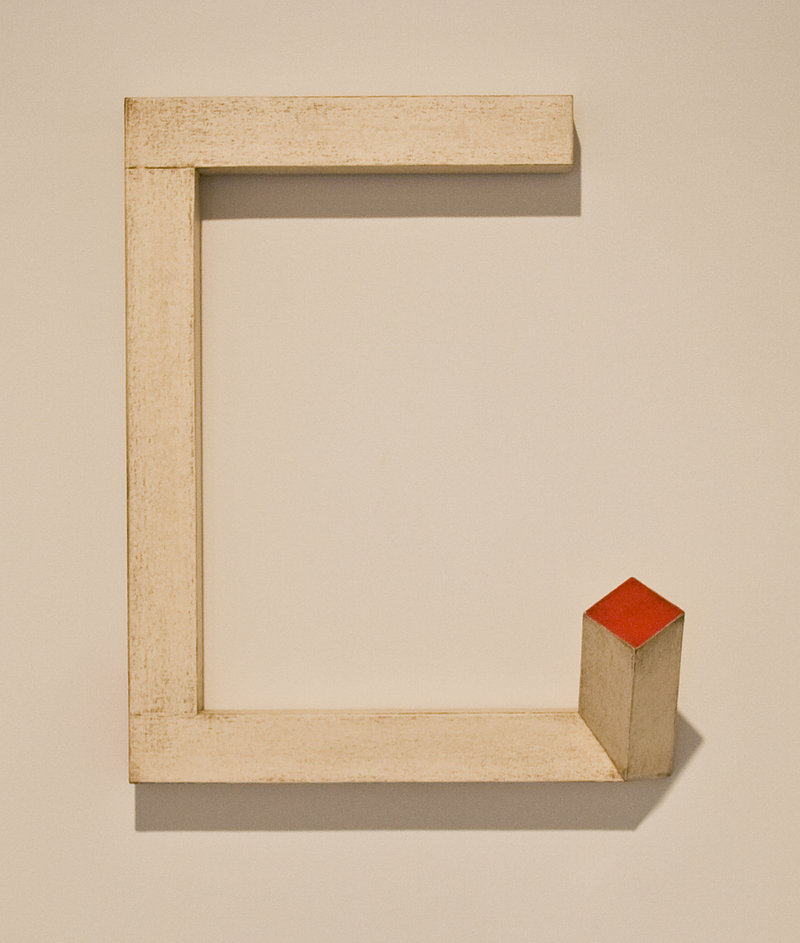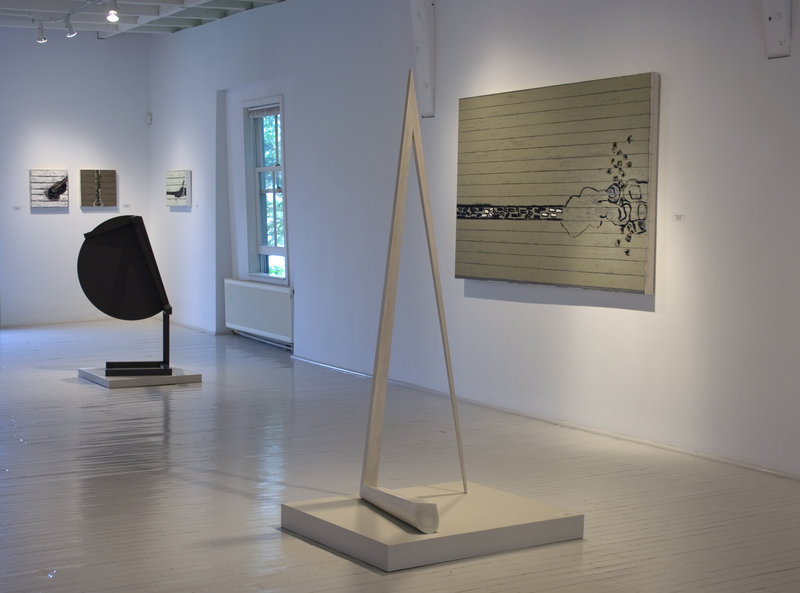I went to the Center for Maine Contemporary Art in Rockport with some trepidation about the shows.
The last time I had seen Duane Paluska’s sculptures there, it was the weakest installation of his work I had ever seen. I was also concerned that Shannon Rankin’s work had been tilting too close to another artist’s with whom she had an exhibition last year.
As well, my colleagues Bob Keyes and Philip Isaacson had already covered the Steve Mumford and Robert Hamilton shows, so I knew I wouldn’t be focusing on their work (which is very strong).
But my low expectations were groundless. The CMCA has never looked better, and all of the exhibitions are excellent and beautifully installed.
Rankin’s “Fathom” is a small but fantastic exhibit in the front of the CMCA’s upper gallery. One of my favorite pieces, however, is in a stairwell — it’s an installation that maps the reaches of sunlight at different times of the day.
Most of Rankin’s work features re-purposed maps. With “Fathom,” she has moved back toward conceptual content and away from the more decorative mode of much of her work in the maps show at June Fitzpatrick Gallery last year.
I really like the chunkier retro aesthetic of the new work, and Rankin has found a way to bring the aesthetic feel of the work closer to its content.
Her piece “Landmark” echoes the Fibonacci series of the piece that won the 2010 Juror’s Award, but in a way that reveals something about the meaning of the math rather than a mere coded gesture. A Fibonacci series is the result of adding the two previous numbers to get a third (0, 1, 1, 2, 3, 5 …), demonstrated in nature by a nautilus shell or the growth seen in the rings of a tree.
“Landmark” appears as 10 strips of red and white maps stacked up to a point. Placed next to the sheer triangle form of “Strata,” the two pieces reveal the hierarchical logic in each other.
I particularly like Rankin’s “Lineage.” She has razor-cut red roadways from maps, leaving only the clover-like exit and entrance ramp forms. The 20 or so roads are hung from a single point in a float frame.
The presentation reveals the fragile fluidity of the map paper, and the effect is surprisingly organic — like sea life, roots or dried flowers — even though the red pulses with life as though living arteries.
Some of Rankin’s work has direct references, such as a Mobius strip (which can be made by taping the ends of a strip of paper, twisted once, so that the front end connects to the back, allowing a continuous path on both sides of the paper). The title of this piece, “Traverse,” hints of the object’s curious properties, and you don’t need to know anything about a Mobius strip to enjoy the piece in terms of its galactic map references.
A PERFECT PAIRING
My frustration with the previous installation of Paluska’s work was completely curatorial: Showing his quirky, furniture-oriented sculptures with minimalism pretty much destroyed their narrative qualities, and I think that’s the life blood of the work itself.
“Ahab,” for example, starts as a chunk on the floor, reaches 6 feet straight into the air, and ends with a sharp point directed back toward the floor. As literal minimalism, this piece works perfectly well, but as a narrative map in the context of Ahab’s ups and downs in Melville’s “Moby-Dick,” it’s brilliant.
My favorite of Paluska’s 14 works is a small wall piece hung on a great new bit of wall facing the entrance to the CMCA. “Untitled #2” is like a square white capital “G” punctuated with a red tip at what would be the cross of the “G.” It’s startlingly crisp and legible.
Pairing Paluska with Elizabeth Cashin McMillen’s paintings turns out to be great for both of them. Despite their almost black-and-white palette, McMillen’s paintings are surprisingly lush and playful. She tends to show a comic-style human arm or leg poking or playing with a jumpy flock of eyes — all on a background of horizontal stripes.
While the action of the paintings is quite impenetrable, the avoidance of specific narrative is clearly intentional, and so, against all odds, the enigma is satisfying.
The McMillens and Paluskas together make for one of the best-looking shows I have ever seen at the CMCA. All four shows are excellent, and the whole place looks great (even the museum store and the cafe).
If this is indicative of what the CMCA will be like under the new director, Suzette McAvoy, then the CMCA is back, and may be better than ever.
Freelance writer Daniel Kany is an art historian who lives in Cumberland. He can be contacted at:
dankany@gmail.com
Send questions/comments to the editors.






Success. Please wait for the page to reload. If the page does not reload within 5 seconds, please refresh the page.
Enter your email and password to access comments.
Hi, to comment on stories you must . This profile is in addition to your subscription and website login.
Already have a commenting profile? .
Invalid username/password.
Please check your email to confirm and complete your registration.
Only subscribers are eligible to post comments. Please subscribe or login first for digital access. Here’s why.
Use the form below to reset your password. When you've submitted your account email, we will send an email with a reset code.